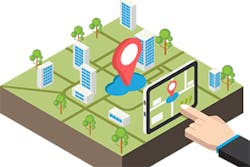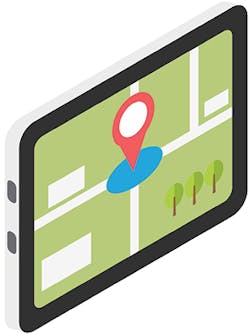Guest Editorial: How Water Utilities Lead the Smart City Movement
While every city may take a different road to becoming smarter, all the roads lead to the same goal—to better serve their citizens by being more responsive and more efficient.
This goal can be achieved by connecting the community through technology, and understanding how one department impacts another. Through recent advances in the Internet of Things, data, and cloud-based computing, cities can see where their infrastructure can become more efficient and sustainable. From transportation and buildings to water utilities and municipal lighting, each of these public service providers has a role to play in improving operations citywide.
Data analytics is key to unlocking the information needed for a smarter, more collaborative city. As more machines and people become connected, cities will begin to receive greater insights into their operations. For example, a town that is experiencing traffic issues and wants to improve its transportation system could simply look at the energy consumption rates inside office buildings and residences to determine when people are traveling to and from work. That same city could also use information from sensors on streetlights to conserve energy, prevent crime, and increase operational efficiency.
Without data analytics, however, the information is just that—information. To truly become a smart city, it is crucial to interpret the massive amounts of data from communication networks to enact meaningful change in city planning and sustainability.
Smarter Cities Help Combat Droughts
Data provides utilities an unprecedented look into how people interact with their cities. This insight can have major impacts in the water industry, including conservation. By leveraging the data from their smart water networks—an integrated set of products, solutions, and systems that allow utilities to better monitor their infrastructure and increase water efficiency—drought-stricken California water departments are acting on meaningful insights that could improve drought conditions.
However, utilities receive an overwhelming amount of information from their communication networks on a daily basis. They need to sift through this tidal wave of information, extract the key pieces of knowledge, and share it with their customers and other public service providers.
By analyzing data, utilities can promote interconnectivity within the utility and relevant organizations, such as city planning, transportation departments, or emergency services. Data analytics also help water utilities improve efficiency and conservation efforts by catching water leaks and providing customers with the information they need to save water.
Prior to smart water networks, many utilities would have to wait for a customer to report an unusually high water bill—often the result of a leak. Now, they can leverage the data from their smart water networks to account for every drop of water in their system and make a real impact on water conservation.
Within days of implementing a smart water network, a utility in Pennsylvania caught a leak that was gushing 200,000 gallons of water per day. Imagine the impact on the drought in California or the southwest United States if they realized even a portion of this water savings at each utility.
Water plays a key role in everyday life—from drinking and hygiene to agriculture, landscape, tourism, and more. Data analytics can provide utilities with the tools they need to protect this precious resource for generations to come.
Communication Is Key
By leveraging data analytics, cities can greatly improve their operations and efficiency. However, it is important for utilities and their government counterparts to effectively communicate in order to streamline their efforts. A simple way for these organizations to align is by exchanging information. Data shared from hundreds of electronic devices can help cities and utilities better forecast issues in their infrastructure, enhance customer service, and lower costs.
Working together and sharing information can produce efficiencies that benefit everyone. Whether it’s dispatching emergency services, redirecting traffic, turning on the streetlights for a major event, or repairing a water line, data analytics has an important role to play in building smarter cities.
Information is key to good customer service, and data analytics provides just that. By utilizing data analytics, water utilities can provide their customers with a never-before-seen look at their water consumption. This creates an open dialogue between the utility and its customer about potential water leaks and methods for improving conservation.
Utilities and their customers crave basic data and visualization tools, such as charts, graphs, and online dashboards. Data analytics allows water utilities to provide this information to their customers and realize even greater value hidden within the information.
Data analytics can also have environmental and societal advantages. With greater insights from smart water networks, utilities can catch costly water leaks and make an impact combating droughts.
Ultimately, data analytics is key to maximizing the massive amounts of information that utilities receive from their interconnected technologies. Analyzing data and creating actionable insights can improve operations, reduce cost, and decrease inefficiencies for utilities and their partners. This exchange of data has the potential to create smarter cities worldwide that maximize conservation to improve quality of life.

